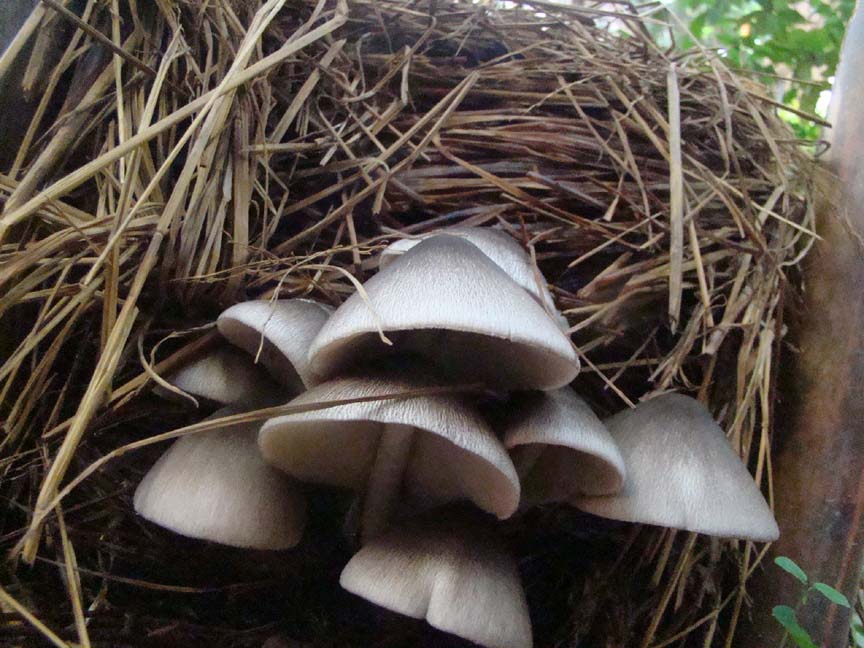Welcome, fellow admirers of fungi, to an exciting exploration of the captivating universe of straw mushrooms! As a passionate connoisseur of mushrooms, I am thrilled to unveil the secrets of these unique edibles that often escape notice in the dynamic realm of culinary pleasures. Join me on an engaging expedition where science meets the art of cooking, revealing the mysteries and marvels of straw mushrooms.
Chapter 1: Encounter the Enigmatic – A Brief Introduction to Straw Mushrooms
Picture stumbling upon a cluster of small, ivory-hued mushrooms during a stroll through a field or a rice paddy. Chances are, you’ve just chanced upon the charming straw mushroom (Volvariella volvacea). These mushrooms, with their delicate appearance and distinct egg-shaped caps, have been a culinary treasure in many Asian cuisines for centuries.
Chapter 2: Unveiling the Puzzle – The Anatomy of Straw Mushrooms
To truly appreciate the elegance of straw mushrooms, let’s dissect their structure. The cap, reminiscent of a small egg, expands as the mushroom matures, reaching a diameter of about 2 to 5 centimeters. Underneath this cap, you’ll find gills, the thin, blade-like structures responsible for spore production.
One exceptional feature of straw mushrooms is their veil, a thin membrane that initially covers the gills. As the mushroom matures, this veil tears, leaving behind a distinctive ring around the stem. The stem itself is slender and delicate, providing a delightful crunch when cooked.
Chapter 3: The Craft of Cultivation – Nurturing Straw Mushrooms
One of the captivating aspects of straw mushrooms is their cultivation process. These fungi have a special fondness for rice straw, earning them their moniker.
Cultivation often transpires in beds of rice straw, creating an ideal medium for these mushrooms to flourish. The process involves precise management of temperature, humidity, and ventilation, transforming a simple straw bed into a sanctuary for straw mushrooms to thrive.
Farmers worldwide have mastered the delicate art of cultivating straw mushrooms, establishing a sustainable and dependable source for this culinary gem.
The careful orchestration of environmental factors ensures a plentiful harvest, ready to grace the tables of epicureans and home cooks alike.
Chapter 4: Culinary Marvels – Straw Mushrooms in the Culinary Arena
Now, let’s delve into the kitchen and explore the culinary wizardry that straw mushrooms bring to the table. These versatile fungi impart a subtle, earthy flavor and a delightful texture to an array of dishes.
From soups and stir-fries to salads and curries, straw mushrooms seamlessly integrate into diverse culinary traditions.
Their capacity to absorb the flavors of the dishes they accompany makes straw mushrooms a preferred choice among chefs.
Whether paired with savory meats or blended into vegetarian concoctions, these mushrooms contribute a distinctive taste that elevates the overall dining experience.
Chapter 5: Nutritional Riches – The Health Perks of Straw Mushrooms
Beyond their culinary appeal, straw mushrooms boast an impressive nutritional profile. Low in calories and rich in essential nutrients, these fungi make a healthy addition to any diet. They serve as a good source of vitamins, minerals, and antioxidants, contributing to overall well-being.
Research suggests that the bioactive compounds found in mushrooms, including straw mushrooms, may offer potential health benefits, such as supporting the immune system and displaying anti-inflammatory properties.
While they shouldn’t replace a balanced diet, incorporating straw mushrooms into your meals can be a delectable way to enhance nutritional intake.
Chapter 6: Eco-Conscious Fungi – Sustainable Aspects of Straw Mushroom Farming
As we embrace a more sustainable lifestyle, it’s crucial to consider the environmental ramifications of our dietary choices. In the case of straw mushrooms, there’s positive news.
The cultivation of these mushrooms often involves repurposing agricultural by-products, like rice straw, reducing waste and promoting eco-friendly practices.
Furthermore, the cultivation of straw mushrooms can be seamlessly integrated into crop rotation systems, enriching soil fertility and minimizing the reliance on synthetic fertilizers.
By opting for straw mushrooms, you not only savor a culinary delight but also support environmentally conscious agricultural practices.
Chapter 7: Exploring Varieties – Beyond Volvariella volvacea
While Volvariella volvacea is the primary species recognized as the straw mushroom, it’s worth noting that other mushroom varieties share similar names. For instance, Agaricus aestivalis, commonly referred to as the “straw mushroom,” possesses a distinct appearance and flavor.
Exploring these variations adds an intriguing dimension to your mushroom journey.
Conclusion: A Salute to Straw Mushrooms – Nature’s Culinary Marvel
In conclusion, straw mushrooms are more than just a culinary ingredient; they are nature’s contribution to the culinary arts, embodying a harmonious blend of taste, texture, and nutritional value.
From their modest origins in rice straw beds to gracing gourmet dishes worldwide, these mushrooms have genuinely earned their place in the hearts of food enthusiasts.
So, the next time you chance upon these petite wonders, take a moment to admire the delicate beauty and culinary potential they bring.
Whether you’re an adept chef or a home cook experimenting in the kitchen, let straw mushrooms infuse a touch of enchantment into your gastronomic endeavors. Here’s to the captivating world of straw mushrooms – a treasure trove waiting to be explored!

